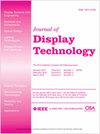一种改进的晶片级白色PC-LED阵列封装电泳沉积方法
Q Engineering
引用次数: 11
摘要
将蓝色发光二极管(LED)与黄色磷光体相结合,称为磷光体转换的白色发光二极管(pc-WLED),是一种广泛用于白色LED制造的方法。本文研究了一种用于pc WLED封装的共形荧光粉涂层的改进电泳沉积(EPD)方法。将锑锡氧化物(ATO)纳米粒子涂覆在LED芯片阵列表面,通过喷涂技术获得均匀分布的透明导电层作为电极(即EPD工艺的阴极)。在制备的荧光粉颗粒的悬浮液中加入一种分散剂以提高其稳定性。实验测量表明,用这种新开发的EPD方法实现了LED芯片表面周围磷光体层的一种紧凑均匀分布。相关色温(CCT)和发光效率的标准偏差分别为256.03K和3.06lm/W。在多芯片阵列规模上的磷光体涂层原型表明,本工作中改进的EPD方法可以实现用于白色pc LED的晶片级芯片规模封装(WLCSP)。本文章由计算机程序翻译,如有差异,请以英文原文为准。
An Improved Electrophoretic Deposition Method for Wafer Level White PC-LED Array Packaging
Combining the blue light-emitting diodes (LEDs) with the yellow phosphors, as called phosphors-converted white light-emitting diodes (pc-WLEDs), is an approach widely used for white LEDs manufacturing. The investigation of an improved electrophoretic deposition (EPD) method of conformal phosphor coating for pc-WLEDs packaging is presented in this paper. The antimony tin oxide (ATO) nanoparticles were used to coat surface of LED chips array to achieve an evenly distributed transparent conductive layer as electrode (i.e., cathode for EPD process) by the spray technique. A kind of dispersant was added into the suspension of prepared phosphor particles to improve the stability. The experimental measurement reveals that a sort of compact uniform distribution of the phosphor layer surrounding the LED chips' surface was realized with this newly developed EPD method. And the standard deviation of correlated color temperature (CCT) and luminous efficiency are 256.03 K and 3.06 lm/W, respectively. The prototype of phosphor coating on a multchip array scale demonstrates that a Wafer Level Chip Scale Packaging (WLCSP) for white pc-LEDs can be achieved with the improved EPD method in this work.
求助全文
通过发布文献求助,成功后即可免费获取论文全文。
去求助
来源期刊

Journal of Display Technology
工程技术-工程:电子与电气
CiteScore
1.50
自引率
0.00%
发文量
0
审稿时长
2.8 months
期刊介绍:
This publication covers the theory, material, design, fabrication, manufacturing and application of information displays and aspects of display technology that emphasize the progress in device engineering, design and simulation, materials, electronics, physics, and reliability aspects of displays and the application of displays. The Journal is sponsored by EDS, seven other IEEE societies (BT, CES, CPMT, IA, IM, PHO and SSC) and the Optical Society of America (OSA).
 求助内容:
求助内容: 应助结果提醒方式:
应助结果提醒方式:


